Day 1 :
Keynote Forum
H C Yee
NASA Ames Research Center, USA
Keynote: Recent developments in accuracy and stability improvement of nonlinear filter methods for DNS and LES of compressible flows
Time : 09:35-10:15

Biography:
H C Yee (NASA Ames Research Center) has over 30 years of fundamental research experience in the fields of Computational Physics, Computational Fluid Dynamics (CFD) and Nonlinear Dynamics. She is well known in numerical algorithm development in high-resolution shock-capturing method and low dissipative high order methods for high speed shock/turbulence/combustion interactions for gas dynamics and MHD systems. She has also worked extensively in the area of ``Dynamics of Numerics for Computational Physics'' which has important implications on the interpretation and reliability of complex nonlinear numerical simulations in general and on the numerical prediction of flow transition by DNS in particular. Her numerical methods have been incorporated into many production CFD codes both domestically and internationally for applications in aerodynamics, astrophysics, and fluid/plasma dynamics.
Abstract:
Recent progress in the improvement of numerical stability and accuracy of the Yee & Sjogreen (JCP-2007) high order nonlinear filter schemes is described. The Yee & Sjogreen adaptive nonlinear filter method consists of a high order non-dissipative spatial base scheme and a nonlinear filter step. The nonlinear filter step consists of a flow sensor and the dissipative portion of a high resolution nonlinear high order shock-capturing method to guide the application of the shock-capturing dissipation where needed. The nonlinear filter idea was first initiated by Yee et al. using an artificial compression method (ACM) of Harten as the flow sensor. The nonlinear filter step was developed to replace high order linear filters so that the same scheme can be used for long time integration of direct numerical simulations (DNS) and large eddy simulations (LES) for both shock-free turbulence and turbulence-shock waves interactions. The improvement includes four major new developments: (a) Smart flow sensors were developed to replace the global ACM flow sensor. The smart flow sensor provides the locations and the estimated strength of the necessary numerical dissipation needed at these locations and leaves the rest of the flow field free of shock-capturing dissipation. (b) Skew-symmetric splittings were developed for compressible gas dynamics and magnetohydrodynamics (MHD) equations to improve numerical stability for long time integration. (c) High order entropy stable numerical fluxes were developed as the spatial base schemes for both the compressible gas dynamics and MHD. (d) Several dispersion relation-preserving (DRP) central spatial schemes were included as spatial base schemes in the framework of our nonlinear filter method approach. With these new scheme constructions, the nonlinear filter schemes are applicable for a wider class of accurate and stable DNS and LES applications, including forced turbulence simulations where the time evolution of flows might start with low speed shock-free turbulence and develop into supersonic speeds with shocks. Representative test cases for both smooth flows and problems containing discontinuities for compressible flows are included.
Recent Publications
1. Yee H C and Sjogreen B (2007) Development of low dissipative high order filter schemes for multiscale Navier-Stokes MHD systems. Journal of Computational Physics 225(1):910-934.
2. Yee H C, Kotov D V, Wang W and Shu C W (2013) Spurious behavior of shock-capturing methods by the fractional step approach: problems containing stiff source terms & discontinuities. Journal of Computational Physics 241:266-291.
3. Kotov D V, Yee H C, Wray A A, Sjogreen B and Kritsuk A G (2016) Numerical dissipation control in high order shock-capturing schemes for LES of low speed flows. Journal of Computational Physics 307: 189–202.
- Fluid Dynamics | Microfluidics | Numerical Methods | Magneto Hydrodynamics | Heat Transfer System

Chair
Faik Hamad
Teesside University, UK

Co-Chair
Tomoaki Kunugi
Kyoto University, Japan
Session Introduction
Faik Hamad
Teesside University, UK
Title: The liquid-liquid and gas-liquid two-phase flow studies with and without heat transfer
Time : 11:45-12:05

Biography:
Faik Hamad has completed his PhD from Bradford University, UK. He worked 4 years as Researcher and Teaching Fellow at Aberdeen University before he joined Teesside University as Senior Lecturer in 2011. He has published more than 30 papers in reputed journals and has been serving as Reviewer for a number of journals. His publications and expertise are in multiphase flow, renewable energy and heat transfer areas. He has won two grants to extend his research recently to new areas of microbubble generation and flow in porous media and microchannel.
Abstract:
The dispersion of bubble/drops in liquid plays a vital role in many physical and chemical processes as the momentum, mass and energy transfer are largely controlled by the available interfacial area between the phases. The distribution of volume fraction and interfacial area concentration in a two-phase flow are influenced by bubble/drop size. The presence of bubbles/drops affects the turbulence intensity in comparison to the single-phase flow. The drops breakage and coalescence are related to turbulence activities. The interactions between these various parameters contribute to the development of the flow behavior in the vertical pipe under investigation. The results on development of liquid-liquid (kerosene-water) up-flow in a vertical pipe of 77.8 mm inner diameter and 4.5 m length downstream of a 90o bend using optical and hot-film anemometry will be presented. The data have been collected at L/D ratios of 1, 16, 38 and 54 to investigate: The effect of bent on flow development in the pipe, the effect of volumetric quality and mixture velocity on flow parameters under fully developed condition at L/D=54, the effect of pipe inclination on various variables will discussed and the effect of introducing kerosene drops on two-phase flow turbulence will be discussed. The speech will also address the following work on gas-liquid multiphase flow: 1. The effect of the volumetric quality and mixture velocity on pressure drop of gas-liquid flow in horizontal pipes of different diameters are investigated experimentally, 2. The multiphase flow of air-oil droplet in porous media was studied to understand the pressure drop and filters performance, 3. Analysis of single phase/two-flow pressure drop in a hydrophobic small channel environment and the following two work on effect of multiphase flow on heat transfer will be introduced: 1. Investigation of impingement heat transfer for air-sand mixture flow and 2. Heat transfer from a cylinder in cross-flow of single and multiphase flows.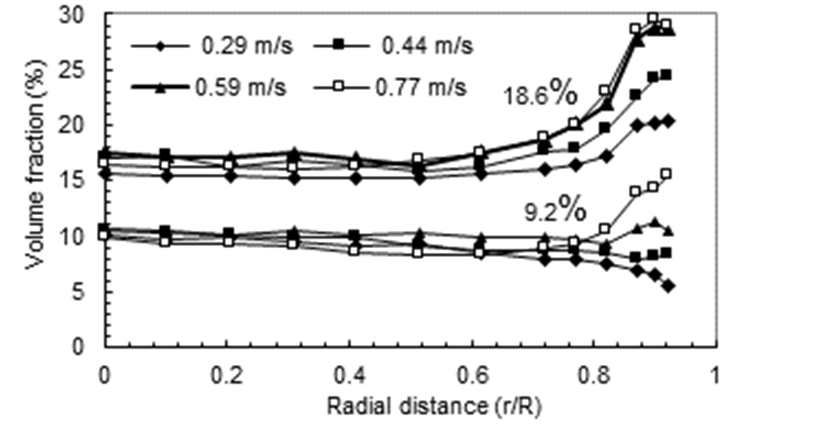
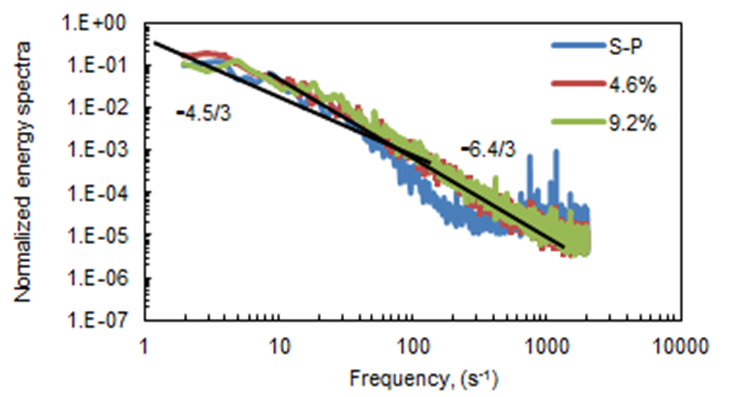
Recent Publications
1. F A Hamad and S He (2017) Heat transfer from a cylinder in cross-flow of single and multiphase flows. International Journal of Mechanical, Aerospace, Industrial, Mechatronic and Manufacturing Engineering 11(3):386-390.
2. Adnan A Abdul Rasool, Safaa S Ahmad and F A Hamad (2017) Effect of impeller type and rotational speed on flow behavior in fully baffled mixing tank., International journal of advanced research (IJAR), International Journal of Advanced Research 5(1):1195-1208.
3.F A Hamad, F Faraji, C G S Santim, N Basha and Z Ali (2017) Investigation of pressure drop in horizontal pipes with different diameter. International Journal of Multiphase Flow 91:120–129.
Maksim V Ustinov
TsAGI, Russia
Title: Generation of Tollmien-Schlichting waves by free-stream turbulence
Time : 12:05-12:25

Biography:
Maksim V Ustinov works in fields of theoretical and experimental investigations of laminar-turbulent transition and laminar flow control. He developed novel methods of description of non-linear stages of laminar-turbulent transition in the boundary layer on the straight and swept wing. He also published a series of works dealing with theoretical description of transition under enhanced turbulence level. He is an author of phenomenological model of force action and heat action of dielectric barrier discharge on the flow. Group under his leadership experimentally demonstrated delay of ‘‘natural” laminar-turbulent transition by DBD. He is an author of few novel methods of laminar flow control, such as flow acceleration by micro-jets and cross-flow velocity reduction by DBD and surface micro-relief. He also develops new amplitude methods of transition prediction taken into account level of free-stream perturbations and surface roughness.
Abstract:
Amplification of Tollmien-Schlichting (TS) waves excited by free-stream turbulence (FST) is a dominant mechanism of laminar-turbulent transition in a boundary layer on the airplane wing. Recently FST is usually considered as a superposition of vortices moving with flow velocity. Theory and experiment show that such vortices can generate TS waves by means with interaction with strong boundary layer non-uniformity near the leading edge. Because of strong attenuation of TS wave before the neutral point, this receptivity mechanism is too weak for explanation of experimental dependence of transition Reynolds number from FST level. Alternative approach to description of TS waves generation by FST is considered here. It is based on a treatment of turbulence as a superposition of vortices moving with speed deviated from flow velocity. Part of these vortices has period and frequency equal to these parameters of TS waves. They generate instability waves near the neutral point via resonant interaction or non-localized receptivity mechanism. Amplitude method of laminar-turbulent transition prediction based on this receptivity model and evaluation of TS waves growth from linear stability theory was developed. Dependences of r.m.s. velocity pulsations from the Reynolds number for the flat plate boundary layer computed in this way for different values of turbulence level Tu are plotted in Figure 1: (a). Transition Reynolds number as function of Tu found from these data using amplitude criterion u'=0.03u∞ is presented in Figure 1: (b). Computed dependence of transition Reynolds number from Tu well describes available experimental data. Linear dependence of the critical N factor on the logarithm of Tu known as Mack’s correlation is also validated theoretically. The analytically determined proportionality coefficient of this dependence 17/6 is similar in value to 2.4 obtained from the experimental data.

Recent Publications
1. M E Goldstein (1983) The evolution of Tollmien–Schlichting waves near the leading edge. Journal of Fluid Mechanics 127:59-81.
2. D A Fuciarelli, H L Reed and I Lyttle (2000) Direct numerical simulation of leading edge receptivity to sound. AIAA J 38(7):1159-65
3.Yu S Kachanov, V V Kozlov and V Ya Levchenko (1978) Occurrence of Tollmien–Schlichting waves in the boundary layer under the effect of external perturbations. Fluid Dynamics 13(5):704.
4.R G B Shubauer and H K Skramstad (1948) Laminar boundary layer oscillations and transition on a flat plate. NACA Annual Report 34:327-357.
Tomoaki Kunugi
Kyoto University, Japan
Title: Wavy interface behavior and droplet entrainment of annular two-phase flow in rod-bundle geometry with spacers
Time : 12:25-12:45

Biography:
Abstract:
Measurements have been conducted to simultaneously consider both liquid films and droplets of the annular flow on a 3X3 simulating BWR (Boiling light water reactor) fuel rod-bundle test-section with spacers as shown in Fig.1. The optical system of a highspeed camera and a tele-microscope was used to record the backlight images at the gap between a corner rod and a side rod of the bundle at high time and space resolutions. The data at high time and space resolutions provided the detailed descriptions of the gas-liquid interface behaviors at the region close to the inlet as well as further downstream. The formation of the "singlet disturbance-crest" near the inlet which is suggested to be the first form of the disturbance wave was observed. An explanation on the mechanism of this formation process was proposed. The data at high time and space resolutions provided the detailed descriptions of the gas-liquid interface behaviors at the region close to the inlet as well as further downstream. The formation of the "singlet disturbance-crest" near the inlet which is suggested to be the first form of the disturbance wave was observed. An explanation on the mechanism of this formation process was proposed. Obtained images of three types of the entrainment process (bag break-up, ligament break-up, and droplet impingement) not only agreed with the previously proposed mechanisms but also included the information about wavy behavior right before and after these events and the created droplets. In addition, the side-view images of the disturbance waves at different stages of development were presented. These data can be used to evaluate other measuring techniques applied to the study of this type of waves. Moreover, a close-up observation at right up- and downstream of the spacer was conducted to describe the interactions between the two-phase flow and this structure. By using these new experimental arrangements, the interaction mechanisms among the wavy liquid film, droplets and spacer are discussed.

Recent Publications
1.S H Pham, Z Kawara, T Yokomine, T Kunugi (2013) Detailed observations of wavy interface behaviors of annular two-phase flow on rod bundle geometry. Int. J. Multiphase Flow. 59:135-144.
2. S H Pham, Z Kawara, T Yokomine, T Kunugi (2015) Measurements of liquid film and droplets of annular two-phase flow on a rod-bundle geometry with spacer. Int. J. Multiphase Flow 70:35–57.
3. S H Pham, T Kunugi (2016) Annular Flow in Rod-bundle: Effect of Spacer on Disturbance Waves. Flow Measurement and Instrumentation. 50:280-288.
4. Y Cao, Z Kawara, T Yokomine, T Kunugi (2016) Visualization study on bubble dynamical behavior in subcooled flow boiling under various subcooling degree and flowrates. Int. J. Heat Mass Transfer. 93:839–852.
5.Y Cao, Z Kawara, T Yokomine, T Kunugi (2016) Experimental and numerical study on nucleate bubble deformation in subcooled flow boiling. Int. J. Multiphase Flow. 82:93-105
I V Sharikov
Saint Petersburg Mining University,Russia
Title: Development of control systems of sintering processes in rotary tubular kilns on base 2D-modelling with using thermistor’s scanning
Time : 12:45-13:05

Biography:
Abstract:
The article considers the role of the lining in the tubular rotary kilns used for heat treatment processes of raw material in the metallurgical, chemical and other fields of industries. The method of selecting a new design thermal insulation element, ensuring reduction of heat loss to the environment and more accurately to provide the required thermal processing mode through simulation in ANSYS Fluent software package has been developed. A system of monitoring the state of the lining with a thermal imager and control system that provides consistency lining without stopping the operating kiln has been developed.
Do Wan Kim
Inha University, South Korea
Title: Extreme computation of Stokes flow using axial Green function method on refined axial lines
Time : 14:00-14:20

Biography:
Abstract:
The axial Green function method (AGM) has been developed for the efficient numerical computations of the solution of partial differential equations that comes from physical phenomena, for instance, like the electric potential, the heat, the convection-diffusion, and the Stokes flow. Recent progress in AGM enables us to calculate extreme problems caused by the geometry of a domain. We refine the axial lines enough to resolve the accurate solution near the geometric extreme region of interest, and elsewhere the axial lines are coarsely distributed. This gives rise to the non-matching axial lines along the interface between the extreme and the other regions. At the non-matching points on the interface, we develop how to glue the solutions across the interface numerically. The pressure blow-up in Stokes flow is one of extreme phenomena of interest. Here, the pressure blow-up takes place between two adjacent circular bodies that are extremely close but don’t touch each other. Since it is fundamental to understand singular behavior of the solution in this case, we accurately calculate the blow-up pressure between close bodies to predict how serious it is. To do this efficiently, the AGM with refinement is employed. According to our calculation, the pressure blow-up becomes the reciprocal of square distance between bodies.
Recent Publications
1.W Lee, H K Kim and D W Kim (2017) Axial Green function method for axisymmetric electromagnetic field computation. IEEE Transactions on Magnetics 53(6):7206504.
2.W Lee and D W Kim (2014) Localized axial Green’s function method for the convection-diffusion equations in arbitrary domains. Journal of Computational Physics 275:390-414.
3.S Jun and D W Kim (2011) Axial Green’s function method for steady stokes flow in geometrically complex domains. Journal of Computational Physics 230:2095-2124.
4.Y Shang, Y He, D W Kim and X Zhou (2011) A new parallel finite element algorithm for the stationary Navier-Stokes equations. Finite Elements in Analysis and Design 47:1262-1279.
5.D W Kim, S K Park and S Jun (2008) Axial Green’s function method for multi-dimensional elliptic boundary value problems. International Journal for Numerical Methods in Engineering 76:697-726.
Qihui Hu
China University of Petroleum, China
Title: Investigation on the internal two-phase flow induced vibration characteristics of the marine riser system
Time : 14:20-14:40

Biography:
Qihui Hu completed his BS and MS degrees in Oil and Gas Storage and Transportation Engineering from the China University of Petroleum, in 2004 and 2006 respectively and PhD degree in Power Engineering and Engineering Thermophysics from Xi’an Jiaotong University, in 2011 and then he joined the Department of Oil and Gas Storage and Transportation, China University of Petroleum till now. His current research interests include oil and gas field gathering and transportation technology, storage and transportation safety engineering, computational fluid dynamics, gas pipeline transmission.
Abstract:
Statement of the Problem: With the exploitation of offshore oil and gas moving to deep water, the safety and stability of offshore equipment has drawn increasing attention. Marine riser system is the key structure connecting the offshore platform and the subsea production system, which suffer both external vortex excitation and internal two-phase flow, making the riser system under complicated dynamic loadings. Researches on the vibration of marine riser were mainly focused on the external vortex induced vibration. However, the influence of internal flow on the vibration of marine riser has not been previously studied. In this study, the vibration characteristics of the marine riser system induced by the internal flow and its influence on the vortex induced vibration were investigated by experimental and numerical method in detail.
Methodology & Theoretical Orientation: A testing apparatus for simulating the marine riser was built to measure the pressure fluctuations in the riser and the internal flow induced vibration of the riser. The numerical model of the two-phase flow in riser system was also established. The measured data and the simulation results will be compared to verify the numerical model.
Findings: The vibration of riser system could be evaluated according to the good corresponding relationship between the vibration signal at the bottom of the riser and the bottom pressure signal. The influence of the different flow patterns on the impact force of the elbow, and the effect of the geometry size on the severe slug flow parameters were both obtained.
Conclusion & Significance: The modal analysis of the riser system with different support modes showed that the possibility of resonance caused by the internal flow was very small. The vortex induced vibration of the riser considering two-way coupling effects simulation results showed that risers with different mass ratios would be motivated by the different forms of vibration.
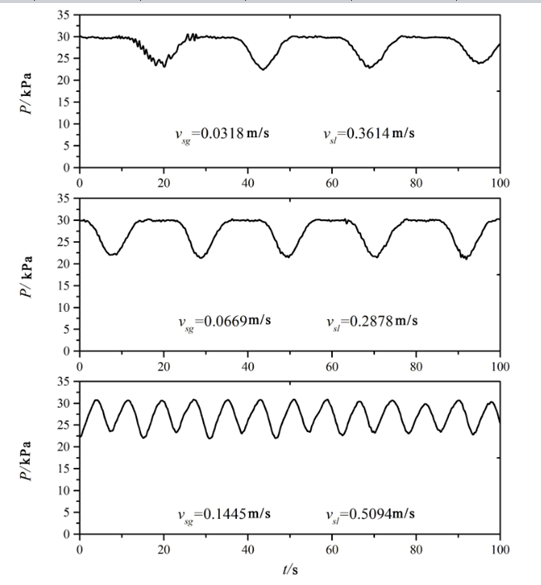
Figure 1: Pressure fluctuation characteristic of the severe slug flow
Recent Publications
1.Xing L C and Yeung H (2013) Numerical study on mitigating severe slugging in pipeline/riser system with wavy pipe. International Journal of Multiphase Flow 53:1-10.
2. Kuiper G L, Metrikine A V, Battjes J A (2007) A new time-domain drag description and its influence on the dynamic behavior of a cantilever pipe conveying fluid. Journal of Fluids and Structures 23(3):429–445.
3. Zhang T, Cao B, Fan Y, et al. (2011) Gas-liquid flow in circular microchannel. Part I: Influence of liquid physical properties and channel diameter on flow patterns. Chemical Engineering Science 66(23):5791-5803.
4.Tay B L and Thorpe R B (2004) Effects of liquid physical properties on the forces acting on a pipe bend in gas-liquid slug flow. Chemical Engineering Research and Design 82(3):344-356.
5.Morse T L, Govardhan R N and Williamson C H K (2008) The effect of end conditions on the vortex-induced vibration of cylinders. Journal of Fluids and Structures 4(8):1227-1239.
Jin-Hee Yoon
Inha University, South Korea
Title: Two particle correlation in heavy-ion collisions using momentum kick
Time : 14:40-15:00
Biography:
Jin-Hee Yoon is an experienced researcher from Inha University in Korea, where she has been a Professor since 1995. Her expertise is in phenomenological understanding of high-energy heavy-ion collision experiments and she is currently leading a Korean ALICE group.
Abstract:
In heavy-ion collisions at high energies, the medium consisted of elementary particles, called parton, is created in a short time. The medium expands fast and cools down. As it cools down, partons combine into various hadrons, which are coming out of the medium with high speed. There are streams of energetic particles in a certain direction, which are called jets. The momenta of jets particles are correlated with momenta of other energetic particles through the medium partons. In a literature, they count the number of particles in a certain direction with respect to the specific jet particle. It shows the peak at zero azimuthal angle due to the cone-shape of the stream. However, the shapes are different depending on the momentum range of jet particles. We try to understand this behavior using the momentum kick model. Very energetic jet particle experiences several collisions while coming through the medium. It transfers the momentum kick to the medium partons in a same direction and the medium partons can align along the jet particle. We applied this model to the Pb-Pb collision data in LHC and found that the model works well.
Recent Publications
1.V Khachatryan (CMS collaboration) (2015) Long-range two-particle correlations of strange hadrons with charged particles in pPb and PbPb collisions at LHC energies. Physics Letters B 742:200-224.
2. Cheuk-Yin Wong (2012) Bose-Einstein interference in the passage of a jet in a dense medium. Physical Review C DOI: 10.1103/PhysRevC.85.064909.
Asher Yahalom
Ariel University, Israel
Title: Variational principles for topological non-barotropic fluid dynamics
Time : 15:00-15:20

Biography:
Asher Yahalom is a Full Professor in the Faculty of Engineering at Ariel University and the academic Director of the Free Electron Laser User Center which is located within the University Center campus. He received his BSc, MSc and PhD degrees in Mathematics and Physics from the Hebrew University in Jerusalem, Israel in 1990, 1991 and 1996 respectively. He was a Postdoctoral Fellow (1998) in the Department of Electrical Engineering of Tel-Aviv University, Israel. He was a Visiting Fellow at the University of Cambridge, UK during the years 2005-2006, 2008 and 2012.
Abstract:
Ideal barotropic fluid flows with the same circulation structure as steady flows generically have commoving physical surfaces on which the vortex lines lie. These become Bernoullian surfaces when the flow is steady. When these surfaces are nested (vortex line foliation) with the topology of cylinders, toroids or a combination of both, a Clebsch representation of the flow velocity can be introduced. This is then used to reduce the number of functions to be varied in the variational principles for such flows. We then can introduce a three function variational formalism for steady and non-steady barotropic flows. In ideal non barotropic flow, circulation is not conserved in the general case but one has a new commoving variable, that is the entropy itself. We will show how entropy considerations will affect the construction of compact variational principles and what are the unique topological local and global conservation laws associated with non-barotropic flows which are derived from those variational principles. The results are compared with analogous study of variational principles and topological constants of motion in non-barotropic magnetohydrodynamics. Possible applications such as flow stability analysis and numerical simulations will also be mentioned
Recent Publications
1. A Yahalom (2003) Method and system for numerical simulation of fluid flow. US patent 6,516,292.
2. Asher Yahalom and Donald Lynden-Bell (2014) Variational principles for topological barotropic fluid dynamics. Geophysical & Astrophysical Fluid Dynamics. 108(6):667-685.
3. Asher Yahalom (2016) Simplified Variational Principles for non-Barotropic Magnetohydrodynamics. Journal of Plasma Physics doi:10.1017/S0022377816000222.
4.Asher Yahalom (2016) Non-barotropic magnetohydrodynamics as a five-function field theory. International Journal of Geometric Methods in Modern Physics. doi:10.1142/S0219887816501309.
5. Asher Yahalom (2017) A conserved local cross helicity for non-barotropic MHD. Journal of Geophysical & Astrophysical Fluid Dynamics 111(2):131–137.
Sergey Utyuzhnikov
University of Manchester, UK
Title: Near-wall domain decomposition in turbulence modeling: Current state of the art and perspectives
Time : 15:20-15:40

Biography:
Sergey Utyuzhnikov is an expert in numerical methods and their applications in fluid dynamics. He is Professor in Computational Mathematics (Russian Ministry of Education) since 1999. He has fundamental results in the numerical modeling of hypersonic flows, non-overlapping domain decomposition for turbulence modeling, active sound control and multi objective optimization. He has provided consultancy work for industrial companies such as Daimler-Benz, ABB, ALSTOM and EDF. He has given invited talks at Los Alamos National Laboratory (USA), Isaac Newton Institute (Cambridge), Henri Poincare Institute (Paris), Schlumberger (Cambridge), EDF/CNRS (Paris), ALSTOM Technology Centre (Zurich), ABB (Zurich), CARDC and many international conferences. He has been the author or co-author of over 100 peer reviewed journal publications and many conference papers. Currently, he is Reader in Computational Mechanics at the University of Manchester.
Abstract:
It is well recognized that the near-wall turbulence modeling is computationally a very expensive problem. The talk addresses a novel approach based on non-overlapping domain decomposition. To realize the domain decomposition, the computational domain is split into the inner region nearby the wall and the outer region. The governing equations in the inner region are reduced to the parabolized Navier-Stokes equations. Thereby, the domain decomposition appears to be approximate although the simplification of the governing equations in the region is mostly justified. As a result, there is a trade-off between the accuracy and computational time. The approach has proven its efficiency for industrial applications. It was shown that the computational time can be saved as much as one order of magnitude whilst the error does not exceed a few percent. The key element of the domain decomposition is the boundary condition at the interface boundary. The interface boundary conditions are achieved via the transfer of the boundary condition from the wall to an interface boundary. If the governing equations in the inner domain are reduced to the parabolized Navier-Stokes equations, then the interface boundary conditions prove to be of Robin type. If the interface boundary is far enough from the wall, the computational time is reduced by one order of magnitude. However, the near-wall turbulence effects might not be well-resolved. In turn, if the interface boundary tends to the wall, then the solution completely coincides with the original low-Reynolds- number-model solution but the effect from domain decomposition vanishes. In the talk, the computational efficiency of the proposed domain decomposition approach is confirmed via the convergence analysis. Possible approaches to the exact domain decomposition are also analyzed. In addition, the extension of the technique to unsteady problems is considered with some examples.
Recent Publications
1. Jones A and Utyuzhnikov S (2016) A near-wall domain decomposition approach in application to turbulent flow in a diffuser. Applied Mathematical Modelling 40(1):329-342.
2. Jones A and Utyuzhnikov S (2015) Application of a near-wall domain decomposition method to turbulent flows with heat transfer. Computers & Fluids 119:87-100.
3.Utyuzhnikov S V (2014) Towards development of unsteady near-wall interface boundary conditions for turbulence modelling. Computer Physics Communications 185(11):2879-2884.
4.Utyuzhnikov S V (2012) Interface boundary conditions in near-wall turbulence modeling. Computers & Fluids 68:186-191.
5. Utyuzhnikov S V (2009) Domain decomposition for near-wall turbulent flows. Computers & Fluids 38(9):1710-1717.
Ulrich Razafison
Université de Bourgogne Franche-Comté, France
Title: Mathematical analysis of the exterior problem of Navier-Stokes using weighted Sobolev spaces
Time : 15:40-16:00
Biography:
Ulrich Razafison is currently an Assistant Professor at the Laboratoire de Mathématiques de Besançon, Université de Bourgogne Franche-Comté, France. His current research interests are in the mathematical analysis of elliptic problem in unbounded domains with the use of weighted Sobolev spaces, in the numerical simulations of conservation laws with application to traffic flow and epidemiology and he is also interested in numerical methods that allow to reduce computational costs such as reduced basis methods.
Abstract:
We are interested in the stationary Navier-Stokes equations describing viscous fluid flow past an obstacle. Because the flow domain is unbounded, we choose to set the problem in a functional framework that uses weight functions to control the behavior at infinity of solutions. To take into account, the wake region behind the obstacle, anisotropic weights are considered. A first indispensable step is the investigation of the Oseen equations that are a linearized version of the Navier-Stokes equations. After presenting the models, we will be interested in the existence and uniqueness results.
Recent Publications
1 Razafison U (2008) The stationary Navier-Stokes equations in 3D exterior domains. An approach in anisotropically weighted Lq spaces. Journal of Differential Equations 245:2785-2801.
2 Amrouche C and Razafison U (2007) The stationary Oseen equations in R3. An approach in weighted Sobolev spaces. Journal of Mathematical Fluid Mechanics 9:211-225.
3 Amrouche C and Razafison U (2007) Weighted Sobolev spaces for a scalar model of the stationary Oseen equations in R3. Journal of Mathematical Fluid Mechanics 9:181-210.
4 Razafison U (2006) Anisotropic weighted Lp spaces for the stationary exterior 3D problem of Oseen. J. Math. Anal. Appl. 323:275-292.
5 Amrouche C and Razafison U (2006) Anisotropically weighted Poincaré-type inequalities; Application to the Oseen problem. Math. Nachr. 279:931-947.
Sergey V Alekseyenko
Oles Honchar Dnipro National University, Ukraine
Title: Numerical simulation of the airfoils icing processes
Time : 16:20-16:40

Biography:
Sergey V Alekseyenko is an Associate Professor, Lecturer of Oles Honchar Dnipro National University, Department of Mechatronics. He has experience in the sphere of the numerical simulation of the hydro aerodynamics and, heat and mass transfer processes in the areas with free boundaries. His actual scientific interests are computational prediction of ice growth on aircraft surfaces, analysis of the effects of ice growth on aircraft aerodynamics and performances, icing physic.
Abstract:
In-flight icing of aircrafts is recognized as a world-wide serious hazard. The resulting ice layer changes the airfoils geometry, flow structure, increases drag, reduces lift and stall angle, has an adverse effect on the controllability of the aircraft as a whole. Development of modern computers has created opportunities for the application of numerical simulation methods together with the icing wind tunnel and aircraft flight tests. As a result, it allows to reduce the time and the cost of the development of anti-icing systems and to expand the investigation parameters range. In “classical” icing codes the potential equation for flow field and integral solutions for boundary layer are used. On one hand, these instruments are simple and productive, very good validated and accepted by authorities in the processes of aircraft certification. But on the other hand, the integral solutions have limitations because they are one-dimensional, assume local properties and neglect most of flow history effects. The present work aimed at creating a numerical simulation method considering the viscosity and compressibility of the air-droplet flow, the micro roughness on the icing surface and thus, allowing to estimate their influence on the aircraft aerodynamic performances. The numerical differential Reynolds-Averaged Navier-Stokes equations for calculation of airflow are used. For the description of turbulence, the modified Spallart-Almaras model is used. The motion of the supercooled drops is described using a model of interpenetrating media. When implementing the methodology, a method of control volumes based on the experimental investigations of the processes of interaction between supercooled large droplets and the icing airfoil surface as well as physical phenomena occurring during the icing process, a splitting method and an implicit difference scheme are used. Based on the developed methodology, simulation of NACA 0012 airfoil icing process was made. The influence of the surface roughness on the structure of the flow field, the distribution of the pressure, friction and heat transfer coefficients, as well as the lift and drag, the stall angle were estimated.
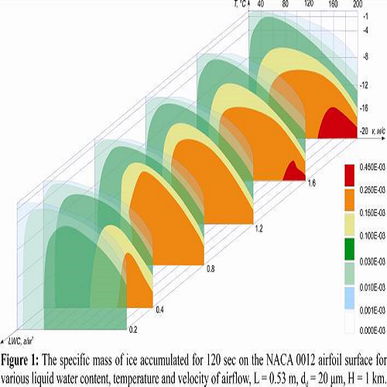
Recent Publications
1. Alekseenko S V, Mendig C, Schulz М, Sinapius М and Prykhodko О Р(2016) An experimental study of freezing of supercooled water droplet on solid surface. Technical Physics Letters 42:524-527.
2. Alekseenko S V and Prikhod’ko A A (2014) Mathematical modeling of ice body formation on the wing airfoil surface. Fluid Dynamics 49:715–732.
3. Prykhodko A A and Alekseenko S V (2014) Numerical simulation of the process of airfoil icing in the presence of large supercooled water drops. Technical Physics Letters 40:884–887.
4. Prikhod’ko A A and Alekseenko S V (2014) Numerical simulation of the processes of icing on airfoils with formation of a “barrier” ice. Journal of Engineering Physics and Thermophysics 87:598-607.
5.Alekseyenko S V and Prykhodko O A (2013) Numerical simulation of icing of a cylinder and an airfoil: model review and computational results. TsAGI Science Journal 44:761-805.
Adelaida Garcia-Magarino
Isdefe, Spain
Title: Droplet deformation and breakup in the shoulder region of an aerodynamic surface: Experimental characterization
Time : 16:40-17:00

Biography:
Adelaida Garcia-Magariño became aerospace engineer in the end of 2009 and started working at INTA in the beginning of 2010 as an external consultant. She has been involved in the NASA/INTA cooperation on Icing (2010-2016), in which she has developed her PhD on droplet deformation, and breakup near the leading edge of an airfoil and has authored more than 10 papers related to Icing Physics. She is now involved in National projects (DFLOW, MEDA, MICRA) funded by the Spanish Ministries of Economy and Competitiveness.
Abstract:
Statement of the Problem: To study droplet aero breakup, many theoretical and experimental studies (based, mostly, on shock tube type facilities) have been carried out in nearly constant high flow velocity conditions. However certain applications of aeronautical engineering interest are characterized by accelerating flow profiles and the flow velocity profile has influence on the droplet deformation and breakup processes. Previous studies concern droplets in the stagnation line of the leading edge of an airfoil, while this investigation studies the behavior of the droplets in the shoulder region of an incoming airfoil.
Methodology & Theoretical Orientation: Experimental tests were conducted in the rotating arm facility at INTA. A blunt airfoil model of chord 0.47 m was mounted at the end of the rotating arm of length 2.2 m that moved at 50, 70 and 90 m/s. A stream of water droplets of diameter of 1000 µm was allowed to fall in the path of the airfoil. The air velocity observed by the droplets, which was continuously increasing, was characterized using PIV. The phenomenon was recorded by a high-speed camera at 72000 fps using the shadowgraph illumination technique. Droplets trajectories and deformations were obtained in three different regions close to the airfoil shoulder (Figure 1).
Findings: The results show that droplets in the shoulder region tend to rotate providing new structures, different from those obtained in the stagnation line (Figure 2). The rotation generates interferences between droplets that have been quantified using an existing theoretical model derived for droplets in the stagnation line.
Conclusion & Significance: Deformation of droplets in the shoulder region of an airfoil has been studied for nine cases corresponding to three different airfoil velocities and three fields of view height. In these regions droplets tend to tilt significantly, which causes aerodynamic interferences between consecutive droplets.
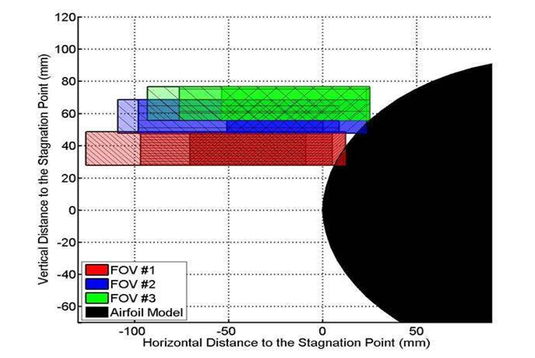
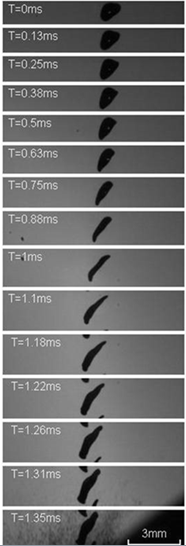
Recent Publications
1. Theofanous T G (2011) Aerobreakup of Newtonian and viscoelastic fluids. Annual Review of Fluid Mechanics 43:661-690.
2. Rendall T C and Allen C B (2014) Finite volume droplet trajectories for icing simulation. International Journal of Multiphase Flow 58:185-194.
3. Iuliano E, Mingione G, Petrosino F and Hervy F (2011) Eulerian modeling of large droplet physics toward realistic aircraft icing simulation. Journal of Aircraft 48:1621-1632.
4. Cao Y, Wu Z and Xu Z (2014) Effects of rainfall on aircraft aerodynamic. Progress in AerospaceSciences71:85-127.
5. Sor S, García-Magariño A and Velázquez A (2016) Model to predict water droplet trajectories in the flow past an airfoil. Aerospace Science and Technology 58:26-35.
R Alberto Bernabeo
Abu Dhabi University, UAE
Title: Traditional and innovative methodologies (UAV-based) for the study of the dynamics of atmospheric aerosols
Time : 17:00-17:20

Biography:
R Alberto Bernabeo is a Doctor in Aeronautical Engineering, in Physics of the Earth System, in Geography and Territorial Processes, in Environmental Sustainability and in the Science of Education with a solid background as Airline Pilot and Instructor. His current research areas are related to the impact of climate change and weather on air transport in the UAE: reduction of CO2 emissions as well as studying and testing of a green trainer to transform small general aviation aircraft for training into no-emission aerial vehicles and finally volcanic eruptions detection by RPAS/UAV of chemical composition of particles with direct threat to the safety of aircraft in flight and health effects on human beings.
Abstract:
Measurements of near-surface gradients in trace gas and aerosol particle concentrations have been limited to studies conducted from fixed location towers or tethered balloons. Moreover, the third spatial coordinate (whatever the height or atmospheric thickness is considered) is usually neglected, leaving a significant gap in aerosol properties. Furthermore, taking measurements close to pollutant sources may not always be possible and it could be too dangerous or risky for manned aircraft to fly close to the ground. These reasons promote the use of small, lightweight UAVs for a range of applications, including atmospheric measurements. Small Unmanned Aerial Vehicles (UAVs) offer new opportunities to air pollution and atmospheric studies. However, there are a number of critical design decisions which need to be taken in order to enable representative data collection, which are a function of UAV motion, propellers and principle/mechanisms of the probes to be mounted on them. The research will include at least a series of different tests: (1) evaluation of the air flow behavior of a multicopter, its downwash and upwash effect, by measuring air speed along three axes to determine the location where the sensors should be mounted; (2) evaluate the use of gas sensors for CO2, CO, NO2 and NO, and the Particle Number Concentration (PNC) monitor to assess their efficiency and performance in a stand-alone situation (by comparing their results with those from reference or at least traceable standard instrumentation) as well as on board of the UAV. The experimental results will be therefore analyzed in depth with the aim of producing a reliable experimental protocol for UAV-based validated data and possibly to set the basis for experimental guidelines in this field. Such research should be undertaken before any UAV system is developed for real world data collection.
Recent Publications
1. Marco Tavani Guido Barbiellini, A Argan, Natalia Auricchio, Alberto R Bernabeo, A Bulgarelli et. al. (2003). The AGILE instrument. Doi: 10.1117/12.461312
2.Bernabeo R A, Bombardi T, Persiani C A, Piancastelli L (2014) An augmented reality interface proposal to improve air transportation safety. Far East Journal of Electronics and Communications. 12(2):79-97.
3.Piancastelli L, Bernabeo R A (2015) Noise reduction and control in DCFS FBW with hardware and digital fuzzy filters. 10(8):3418-3424.

Biography:
Dr. Emiliano Costa graduated in Mechanical Engineering and received PhD in Energy and Environment Engineering at the University of Rome Tor Vergata. He worked as researcher in the HPC centre CINECA, as CFD designer in the University spin-off SCIRE and as CAE expert consultant for different private firms. Since October 2007 he has been working for RINA Consulting (formerly D’Appolonia) and he is currently member of the “Industrial design & CAE” team. In the aviation sector, he used to be the coordinator of the EU FP7 project RBF4AERO (www.rbf4aero.eu) and is the Project Investigator of the Experiment n. 906 of Fortissimo 2 (https://www.fortissimo-project.eu/). He is active in the scientific community as author of papers and reviewer for specialized journals. The main topics which he has worked in the last years are blast, FSI and the application of mesh morphing techniques in simulation-based design and optimization.
Abstract:
The RBF4AERO project is properly conceived to tackle all the aspects related to aircraft numerical design and optimization by making the CFD model parametric through an innovative shape optimization tool based on a high-performance meshless morphing technique. This technique is founded on Radial Basis Functions (RBFs) theoretical approach which offers a number of distinct advantages over the more traditional optimization approaches. This new optimization methodology will guarantee very fast and highly detailed CFD optimization analyses such to significantly reduce costs of optimization of aircraft aerodynamics without losing accuracy or domain extent. The final goal of the Project is the development of the RBF4AERO Benchmark Technology, namely a dedicated numerical platform and strategy capable to allow aeronautical design engineers to build up the novel optimization environment by using their own numerical models and computing platforms, and achieve the results of multi-objective and multi-disciplinary optimization studies in a dramatically shorter time with respect to current practices, and with no need to face with typical limiting trade-off constraints. Besides, the RBF4AERO numerical platform enables to solve other relevant aircraft design studies such as FSI and icing growth in an original fashion, and proposes a challenging CFD optimization technique that foresees the adjoint-morphing coupling.
Relevant impact is then expected in the ever-growing technological demand posed by aeronautical manufacturers in relation to the performance and reliability of aircrafts constituting components. The RBF4AERO Project is funded by the EU Seventh Framework Programme (FP7/2007-2013) under GA n° 605396.
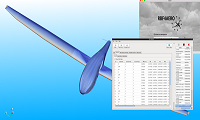
Recent Publications
1. Biancolini, M.E., E. Costa, U. Cella, C. Groth, G. Veble, "Glider Fuselage–Wing Junction Optimization using CFD and RBF Mesh Morphing", Aircraft Engineering and Aerospace Technology: An International Journal, Vol. 88 Iss 6 pp. 740 - 752, October 2016, Emerald Group Publishing Limited. DOI: 10.1108/AEAT-12-2014-0211.R1
2. Andrejašic, M., D. Eržen, E. Costa, S. Porziani, M.E. Biancolini, and C. Groth, "A Mesh Morphing Based FSI Method used in Aeronautical Optimization Applications", ECCOMAS Congress 2016, Crete Island, Greece.
3. Papoutsis-Kiachagias, E.M., M. Andrejasic, S. Porziani, C. Groth, D. Erzen, M.E. Biancolini, E. Costa, and K.C. Giannakoglou, "Combining an RBF-Based Morpher with Continuous Adjoint for Low-Speed Aeronautical Optimization Applications", ECCOMAS Congress 2016, Crete Island, Greece.
4. Kiyici F, Yilmazturk S, Arican E, Çoban K, Costa E, Porziani S, "U-turn Optimization of a Ribbed Turbine Blade Cooling Channel Using a Meshless Optimization Technique", AIAA SciTech Forum 2017, 9–13 January 2017, Gaylord Texan, Grapevine, Texas (US).
5. Kiyici F, Yilmazturk S, Çoban K, Arican E, Costa E, Porziani S, "Rib Cross Section Optimization of a Ribbed Turbine Internal Cooling Channel with Experimental Validation", Proceedings of ASME Turbo Expo 2017: Turbine Technical Conference and Exposition, June 26-30, 2017, Charlotte, NC, USA.
Biography:
Mattia Barbarino has a PhD in Mechanical Systems Engineering, and is responsible for the Computational Acoustics Lab at CIRA, Italy. He has been working at CIRA since 2007 in Aeroacoustics, CAA software development and numerical simulation. He has developed a multi-disciplinary view to the aircraft/rotorcraft noise prediction and reduction problem, being active in several EU funded projects (e.g. Nice trip, Cesar, Clean-Sky JTI GRA and GRC ITD) and collaborative projects (GARTEUR). He is Member of the CEAS Aeroacoustics Specialists Committee and point of contact of the IFAR working group on Noise.
Abstract:
The problem of noise generation by compressible turbulent jets has been the subject of studies since the early 1950s, with the introduction of the turbojet also in commercial aircraft. Despite the application of Direct Numerical Simulation to jet-noise prediction, becoming more feasible with the growing advancement in computational resources, industry interest is mainly devoted to fast and reliable numerical tools to be used for design and optimization. Therefore, RANS (Reynolds-Averaged Navier–Stokes) simulations remain the more feasible approach for CFD applications of industrial interest. In this work, the prediction and reduction of noise from subsonic jets through the reconstruction of turbulent fields from RANS calculations are addressed. This approach, known as Stochastic Noise Generation and Radiation, reconstructs the turbulent velocity fluctuations by RANS fields and calculates the source terms of Vortex Sound acoustic analogy. In the first part, numerical and experimental jet-noise test cases have been reproduced to validate the approach for its subsequent use as a design tool. The noise spectra, predicted with SNGR (Stochastic Noise Generation, and Radiation), are in good agreement with both the experimental data and the results of Large-Eddy Simulations. In the last part of this work, an active fluid injection technique, based on extractions from turbine and injections of high-pressure gas into the main stream of exhausts, has been proposed and finally assessed with the aim of reducing the jet-noise through the mixing and breaking of the turbulent eddies. Some tests have been carried out to set the best design parameters in terms of mass flow rate and injection velocity and to design the system functionalities. The approach is suitable to be used for the early design phase of jet-noise reduction technologies and a right combination of injection parameters allows for a reduction of the jet-noise to 3.5 dB, as compared to the baseline case without injections.
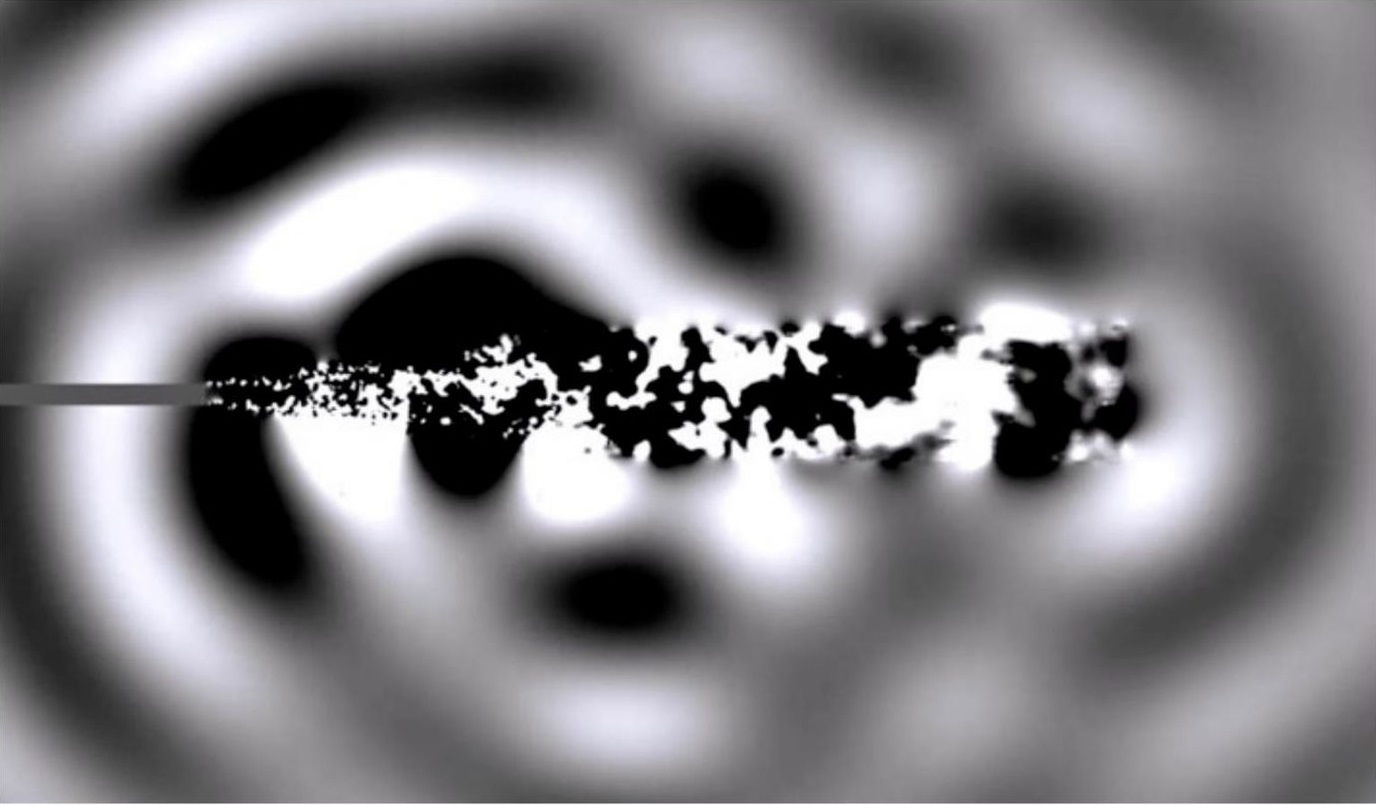
Figure 1: Sound radiation from the jet. Real part of the acoustic pressure [Pa] at 700 Hz.
Recent Publications
1.Barbarino M, Ilsami, M, Tuccillo, R Federico, L (2017) Combined CFD-stochastic analysis of an active fluidic injection system for jet noise reduction. Appl. Sci. 7:623.
2.Barbarino M, Adamo F P, Bianco D, Bartoccini D Hybrid BEM/empirical approach for scattering of correlated sources in rocket noise prediction. Journal of Sound and Vibration. 403:90-103.
- Special Session
Session Introduction
Andrzej Boguslawski
Częstochowa University of Technology, Poland
Title: LES predictions of self-sustained oscillations in round free jets
Time : 10:15-10:50
Biography:
Andrzej Boguslawski has completed his PhD in 1991 from Czestochowa University of Technology (Poland) and Postdoctoral studies from LEMD-CNRS in Grenoble (France). In 2002, he received DSc degree from Czestochowa University of Technology. During 2005-2012, he was the Director of the Institute of Thermal Machinery at Czestochowa University of Technology. He has published more than 100 papers in reputed journals and international conferences proceedings. His research is focused on turbulence modelling, turbulent combustion and shear flows stability. He coordinated many national research projects and participated in international European Framework Programs research projects.
Abstract:
The paper is devoted to recent advancements in numerical simulations of round free jets, which are in common use in many technical applications and which have been widely investigated experimentally and numerically. The attention is attached to conditions under which self-sustained global modes can be triggered in homogeneous and variable density round jets. Global modes result from a phenomenon of absolute instability in low density jets. This phenomenon predicted by linear stability theory was confirmed experimentally in hot air-jet and in air-helium jets. However, as shown recently, self-sustained global oscillations can be released in homogenous density convectively unstable jets provided that a shear layer at the nozzle exit is sufficiently thin. In such a case, a rapid growth of the Kelvin-Helmholtz mode induces a back-flow leading to self-sustained resonant jet oscillations. It was demonstrated by Boguslawski et al. (2013) and Wawrzak et al. (2015) that such a self-excited mechanism requires a low turbulence level and thin shear layer thickness at the nozzle exit characterized by the momentum thickness R/θ = 25 (θ - momentum thickness, R-radius of the nozzle). In Figure 1 the Q-parameter Q = √2 (|Ω|2 - |S|2) (Ω, S- vorticity and strain rate tensors) exhibits toroidal structures resulting from the jet instability. The results are presented for two shear layer thicknesses with R/θ= 20 and R/θ = 28. In the latter case, when the critical thickness is exceeded, the formation of strong vortex structures is observed near the inlet plane, which consequently pair at a distance x/D ≈ 2.9. To the authors’ knowledge, such a self-sustained regime in the homogeneous- density jet is a new phenomenon not reported in the literature so far.

Figure 1: Iso-surfaces of Q - parameter and contours of the axial velocity in the main cross-section. R/ θ =20 -left figure, R/ θ =28 -right figure.
Recent Publications
1.Boguslawski A, Tyliszczak A, Drobniak S and Asendrych D (2013) Self-sustained oscillations in homogeneous-density round jet. Journal of Turbulence 14(4):25–52.
2.Wawrzak K, Boguslawski A and Tyliszczak A (2015) LES predictions of self-sustained oscillations in homogeneous density round free jet. Flow, Turbulence and Combustion 95(2-3):437–459.
3. Boguslawski A, Tyliszczak A, Wawrzak A (2016) LES predictions of unstable round hot jet. Physics of Fluids doi: http://dx.doi.org/10.1063/1.4941656.
4. Monkewitz P A, Bechert D W, Barsikow B and Lehmann B (1990) Self-excited oscillations and mixing in a heated round jet, Journal of Fluid Mechanics 213:611–639.
5. Hallberg M P, Strykowski P J (2006) On the universality of global modes in low-density axisymmetric jets. Journal of Fluid Mechanics 569:493-507
Artur Tyliszczak
Częstochowa University of Technology, Poland
Title: LES predictions of self-sustained oscillations in round free jets
Biography:
Abstract:
The paper is devoted to recent advancements in numerical simulations of round free jets, which are in common use in many technical applications and which have been widely investigated experimentally and numerically. The attention is attached to conditions under which self-sustained global modes can be triggered in homogeneous and variable density round jets. Global modes result from a phenomenon of absolute instability in low density jets. This phenomenon predicted by linear stability theory was confirmed experimentally in hot air-jet and in air-helium jets. However, as shown recently, self-sustained global oscillations can be released in homogenous density convectively unstable jets provided that a shear layer at the nozzle exit is sufficiently thin. In such a case, a rapid growth of the Kelvin-Helmholtz mode induces a back-flow leading to self-sustained resonant jet oscillations. It was demonstrated by Boguslawski et al. (2013) and Wawrzak et al. (2015) that such a self-excited mechanism requires a low turbulence level and thin shear layer thickness at the nozzle exit characterized by the momentum thickness R/θ = 25 (θ - momentum thickness, R-radius of the nozzle). In Figure 1 the Q-parameter Q = √2 (|Ω|2 - |S|2) (Ω, S- vorticity and strain rate tensors) exhibits toroidal structures resulting from the jet instability. The results are presented for two shear layer thicknesses with R/θ= 20 and R/θ = 28. In the latter case, when the critical thickness is exceeded, the formation of strong vortex structures is observed near the inlet plane, which consequently pair at a distance x/D ≈ 2.9. To the authors’ knowledge, such a self-sustained regime in the homogeneous- density jet is a new phenomenon not reported in the literature so far.

Recent Publications
1.Boguslawski A, Tyliszczak A, Drobniak S and Asendrych D (2013) Self-sustained oscillations in homogeneous-density round jet. Journal of Turbulence 14(4):25–52.
2.Wawrzak K, Boguslawski A and Tyliszczak A (2015) LES predictions of self-sustained oscillations in homogeneous density round free jet. Flow, Turbulence and Combustion 95(2-3):437–459.
3.Boguslawski A, Tyliszczak A, Wawrzak A (2016) LES predictions of unstable round hot jet. Physics of Fluids doi: http://dx.doi.org/10.1063/1.4941656.
4. Monkewitz P A, Bechert D W, Barsikow B and Lehmann B (1990) Self-excited oscillations and mixing in a heated round jet, Journal of Fluid Mechanics 213:611–639.
5.Hallberg M P, Strykowski P J (2006) On the universality of global modes in low-density axisymmetric jets. Journal of Fluid Mechanics 569:493-507.
- Plenary Session
Session Introduction
Samir Ziada
McMaster University, Canada
Title: Flow-sound interaction mechanisms during the resonance of trapped diametral modes in shallow cavities

Biography:
Samir Ziada is a Professor at McMaster University and former Chair of Mechanical Engineering. He had 17 years of industrial experience with Sulzer Innotec Ltd. in Switzerland, before joining McMaster University in Canada in 1998. He has received several awards, including the Premier Research Excellence Award of Ontario, the McMaster Award for Excellence in Undergraduate Teaching and the McMaster President Award for Excellence of Graduate Supervision. His research expertise is in the areas of industrial aeroacoustics, flow-induced vibration and unsteady flows. He is currently a regular consultant to several industrial institutions, including the US Nuclear Regulatory Commission, Argonne National Laboratory, Brookhaven National Laboratory, among others. He served as an Associate Editor for the Journal of Fluids and Structures and the Journal of Pressure Vessel Technology. He is a Fellow of the ASME and the CSME and has been the Chair of the ASME Technical Committee on Fluid-Structure-Interaction.
Abstract:
The excitation of trapped acoustic modes within ducted cavities is often encountered in various components of nuclear and conventional power plants, jet engines, turbo-compressors and other engineering equipment. This phenomenon is investigated for a square shallow cavity during the resonance of its lowest four acoustic modes (Figure 1). The unsteady flow structure and the acoustic mode shapes during these resonances are detailed by means of pressure measurements at various azimuthal locations, time resolved particle image velocimetry technique, and numerical simulation of the resonant modes using finite element analysis. Three different interaction patterns are analyzed, corresponding to the resonance of a single stationary acoustic mode, simultaneous excitation of two different stationary acoustic modes, and a special case of spinning mode resonance due to the excitation of two degenerate acoustic modes. After reviewing the general resonance response of the four acoustic modes, attention will be focused on the dual resonance case (i.e., simultaneous excitation of modes 3 & 4 which have different frequencies and mode shapes). In this case, the circumference of the cavity shear layer is found to be divided into 8 segments, each of which is acoustically excited at a frequency which is different from those exciting the adjacent segments. The excitation level is also not uniform over each segment. Despite this rather complex pattern of acoustic excitation along the shear layer circumference at the upstream cavity corner, coherent vortices of different frequencies and phase do form over various segments of the shear layer circumference and are found to retain their individual coherence as they travel along the cavity mouth up to the downstream corner. The results of this study substantially improve our understanding of this complex excitation mechanism and the acquired flow visualization images constitute a challenging benchmark case for the validation of Computation Aero-Acoustic (CAA) codes.
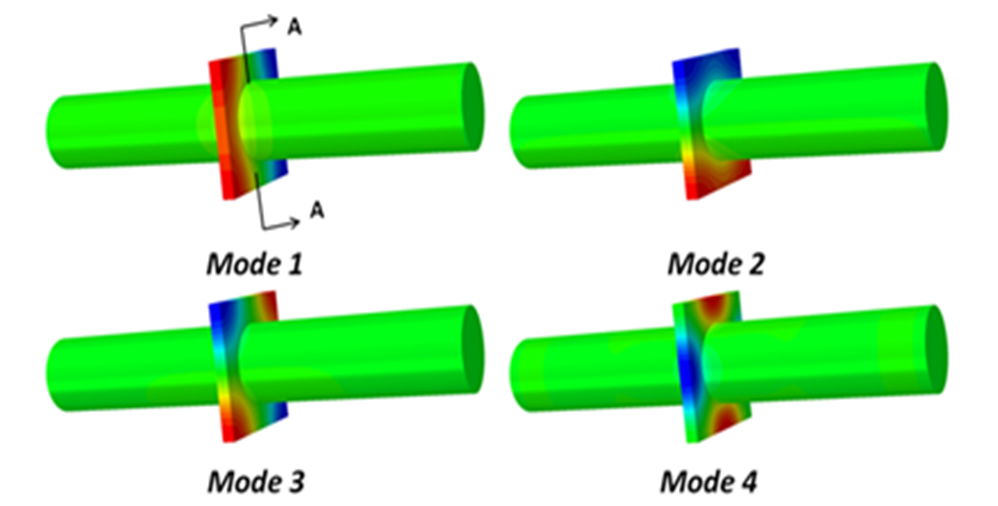
Figure 1: Acoustic pressure distributions of the first four trapped acoustic modes obtained by means of numerical simulation
Recent Publications
1. Aly K and Ziada S (2010) Flow-excited resonance of trapped modes of ducted shallow cavities. Journal of Fluids & Structures 26:92-120.
2.Aly K and Ziada S (2011) Azimuthal behavior of flow-excited diametral modes of internal shallow cavities. Journal of Sound & Vibrations 330:3666-3683.
3. Aly K and Ziada S (2016) Review of flow-excited resonance of acoustic trapped modes in ducted shallow cavities. Journal of Pressure Vessel technology 138:040803.
4. Hein S and Koch W (2008) Acoustic resonances and trapped modes in pipes and tunnels. Journal of Fluid Mechanics 605:401-428.
5.Tonon D, Hirschberg A, Golliard J and Ziada S (2011) Aeroacoustics of pipe systems with closed branches. International Journal of Aeroacoustics 10 (2):201-276.
















